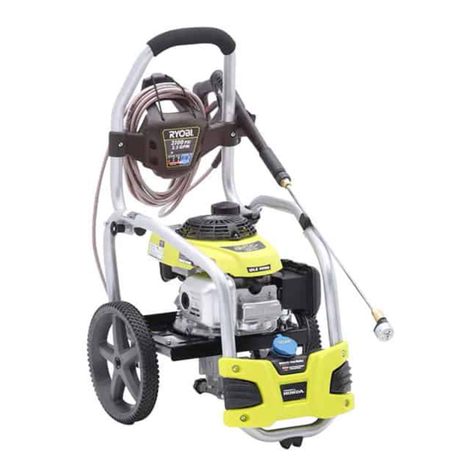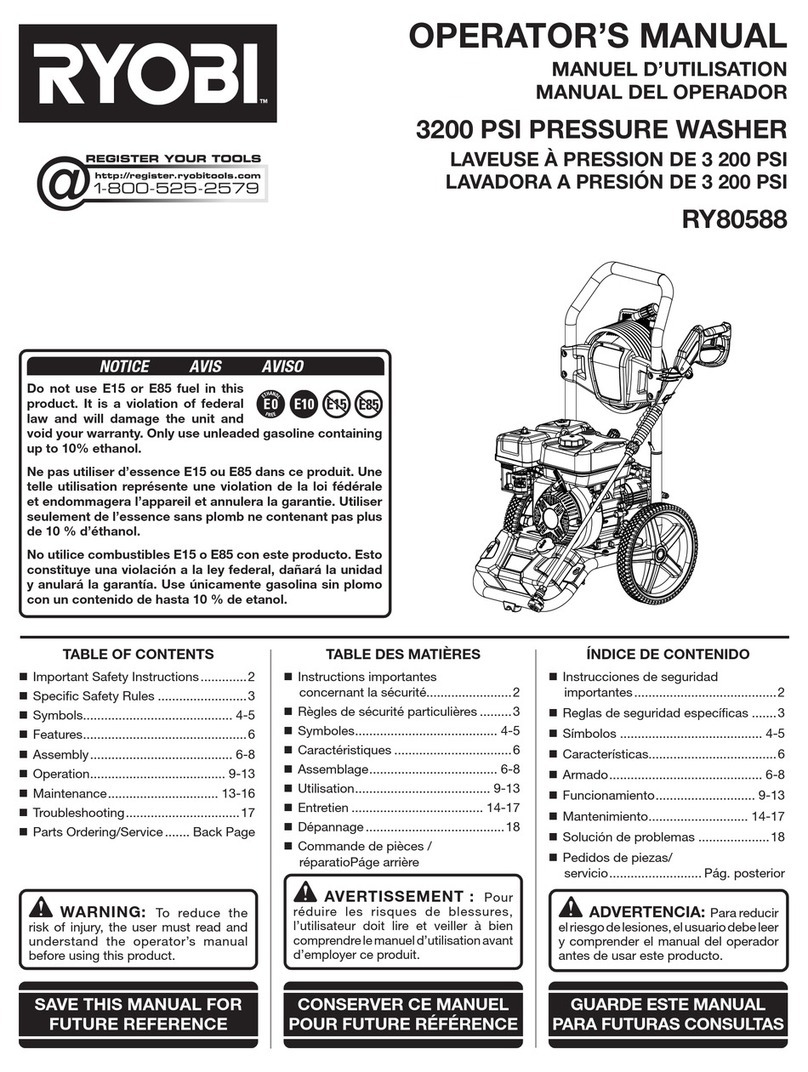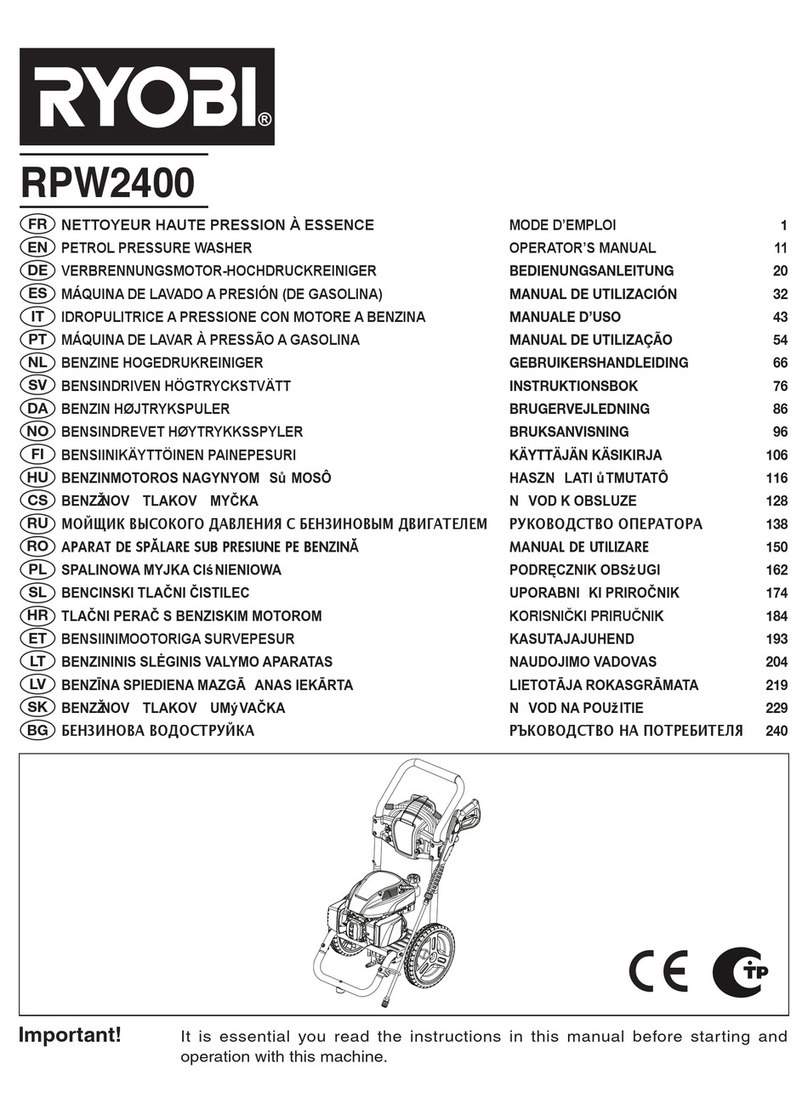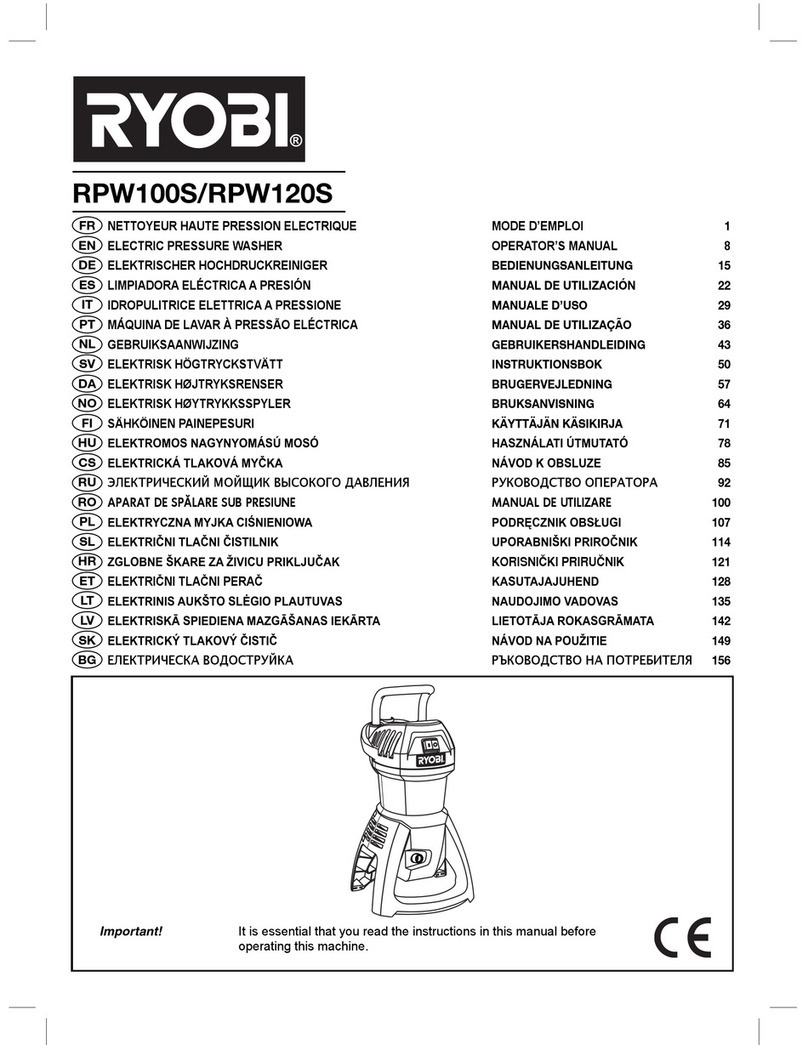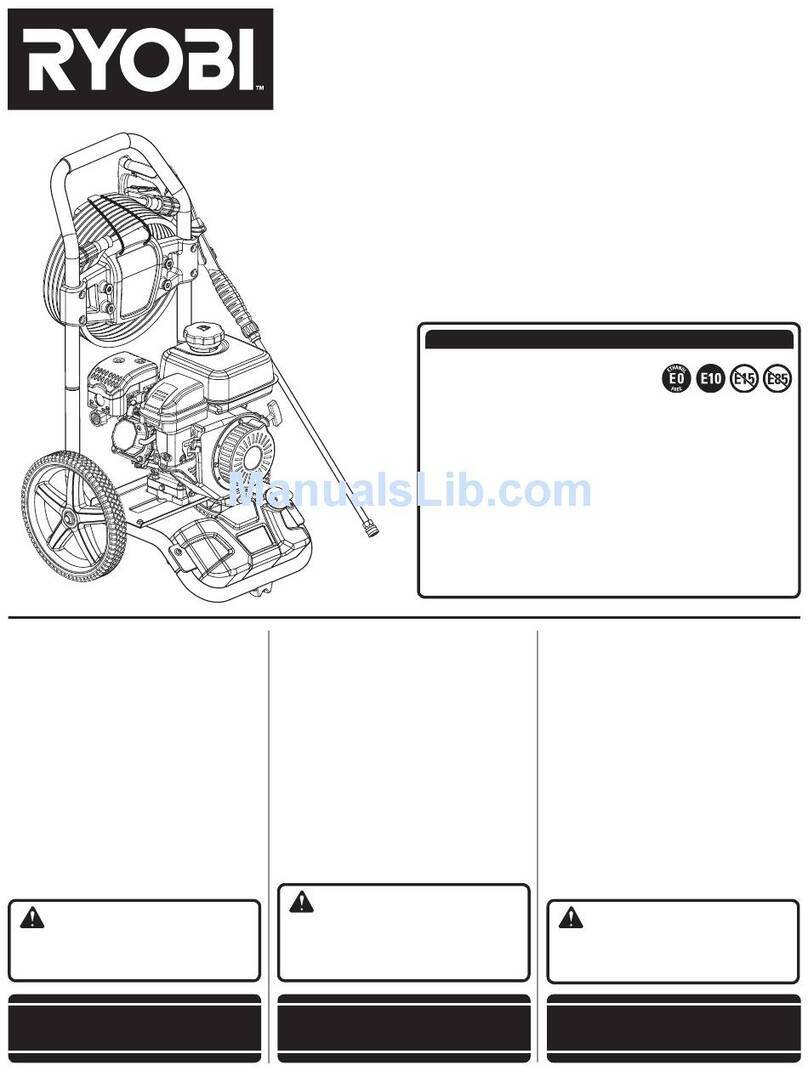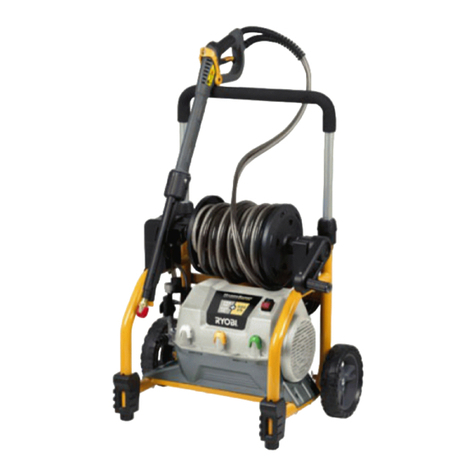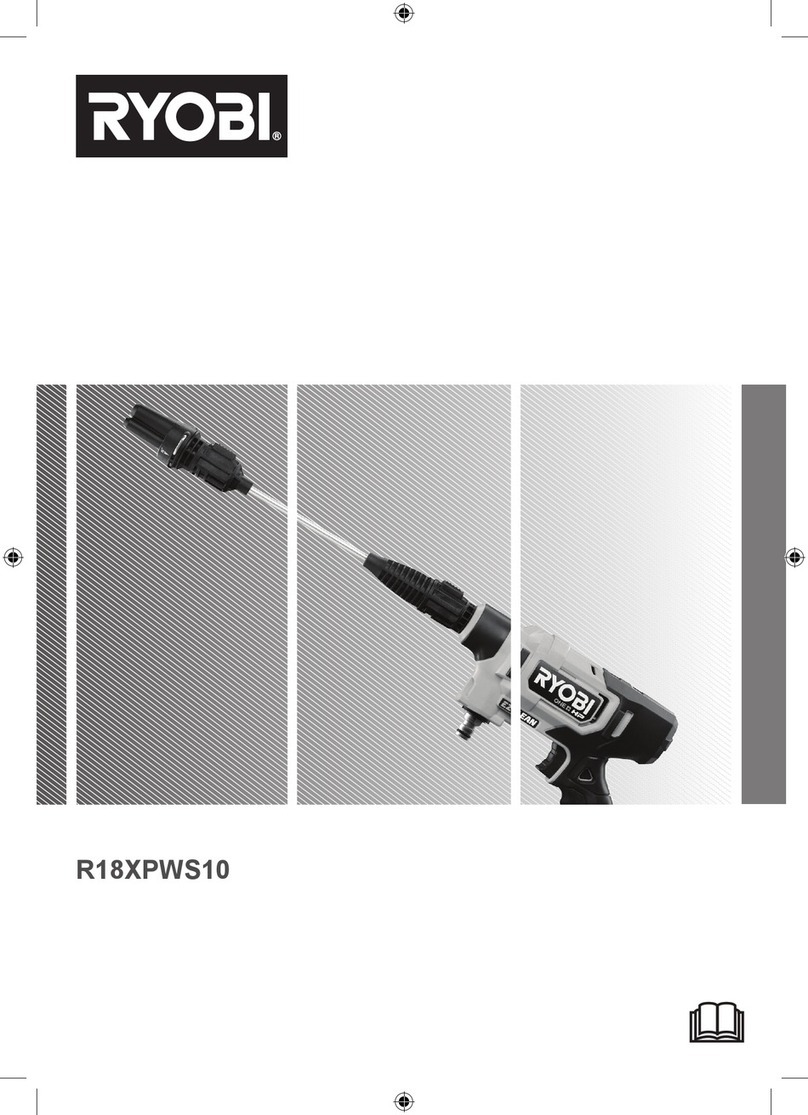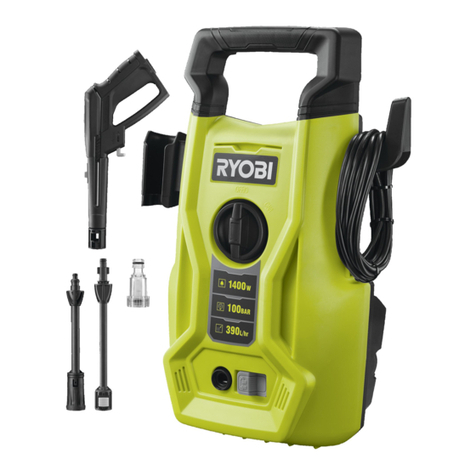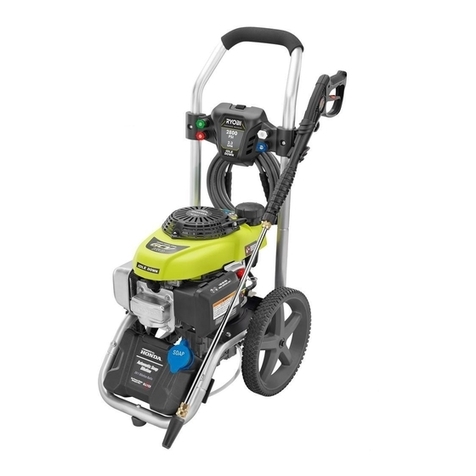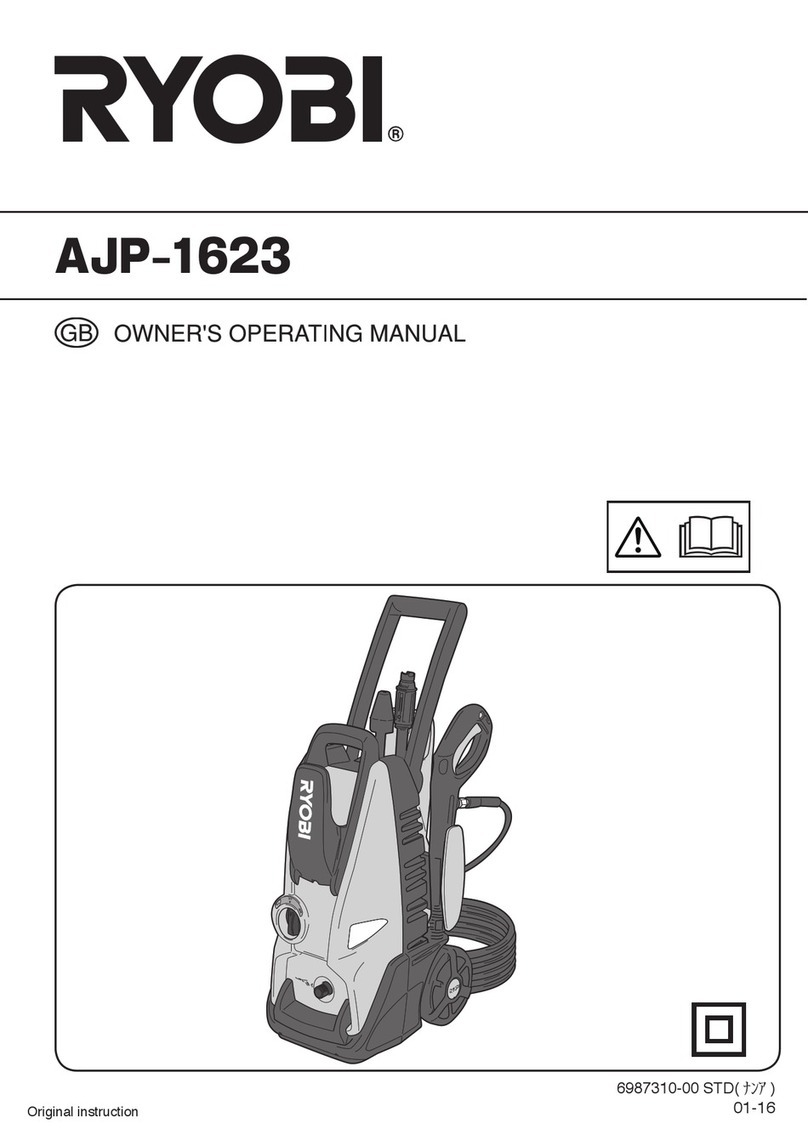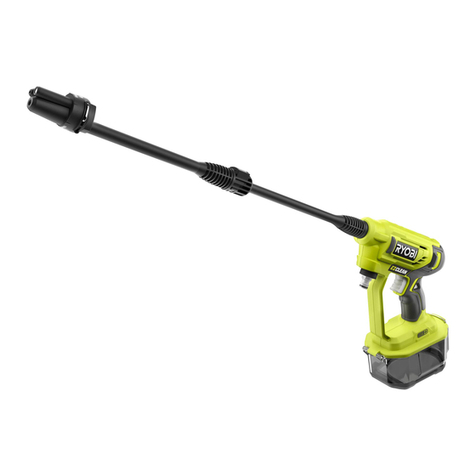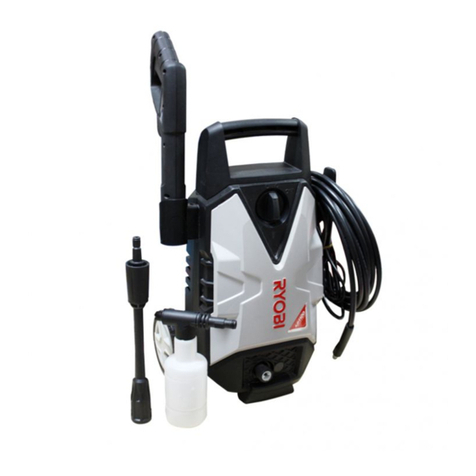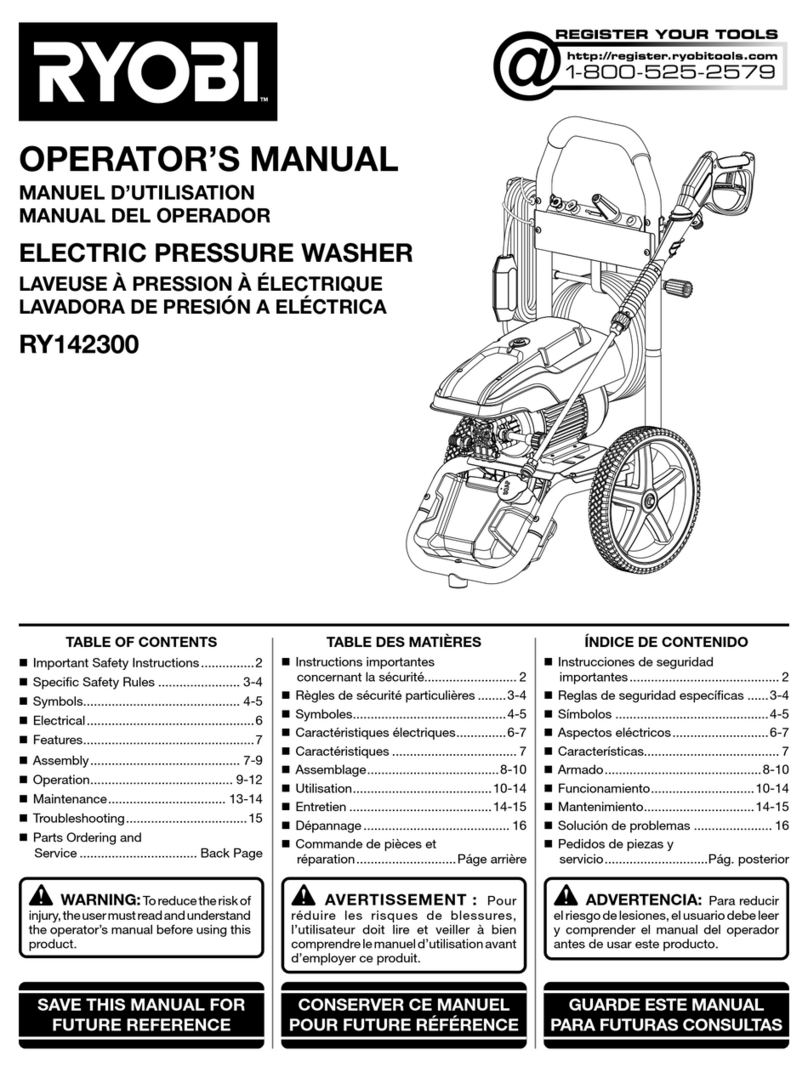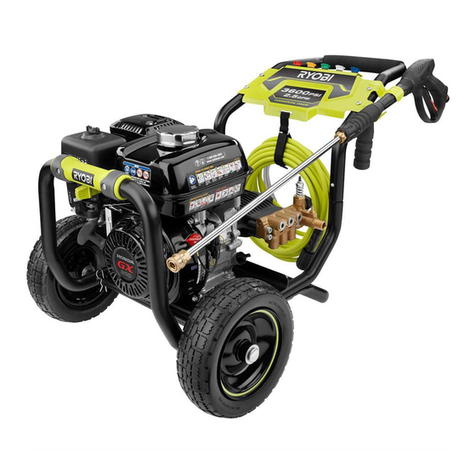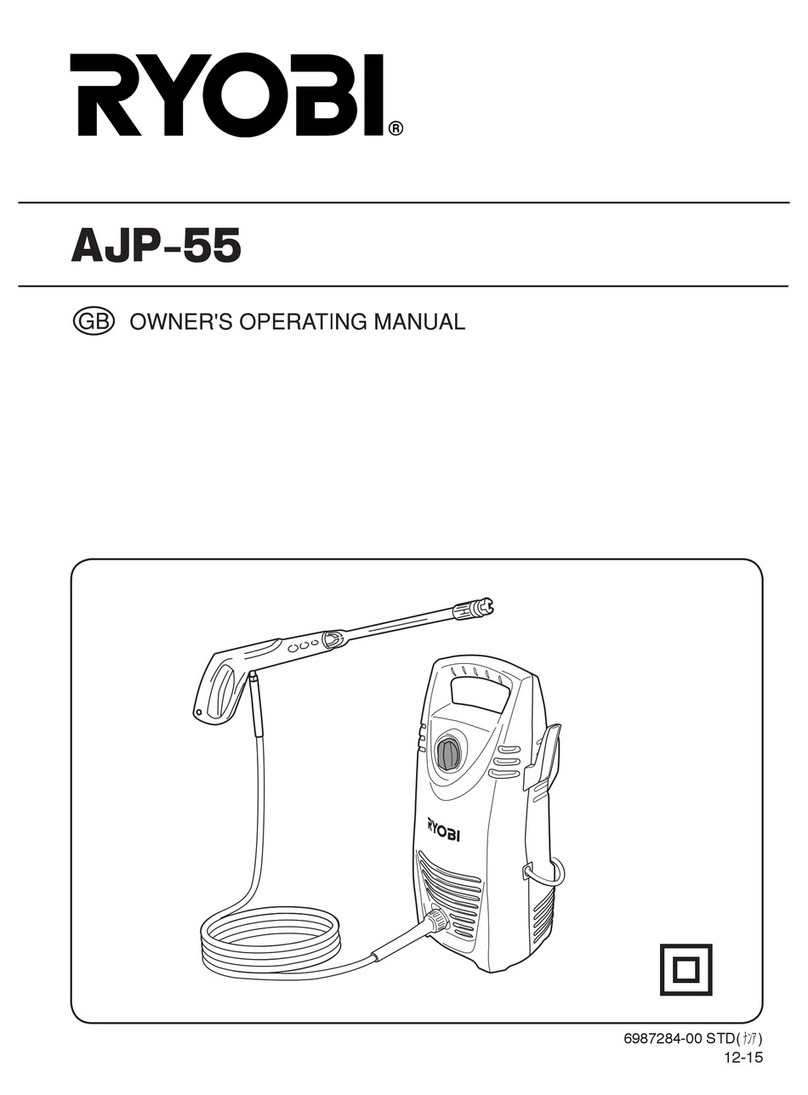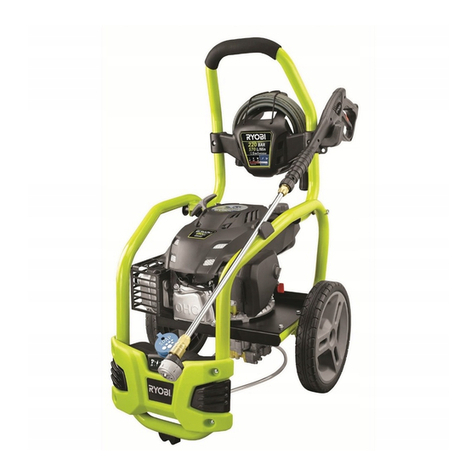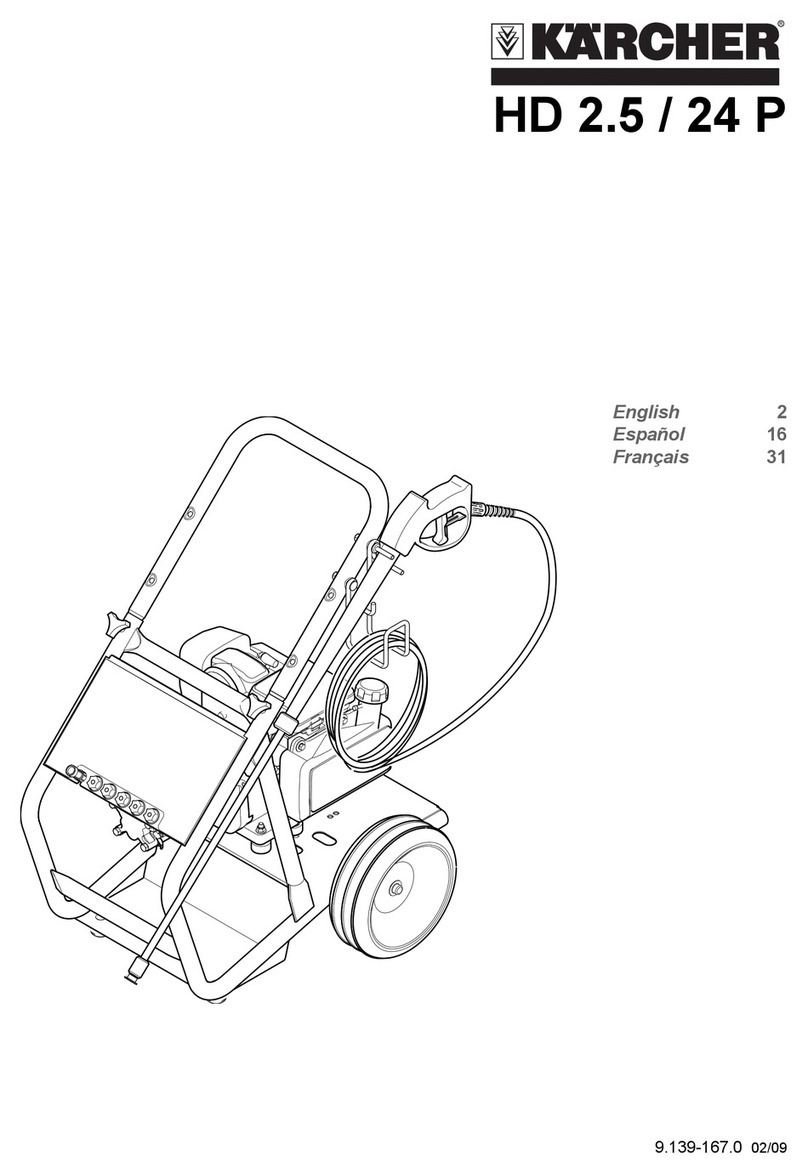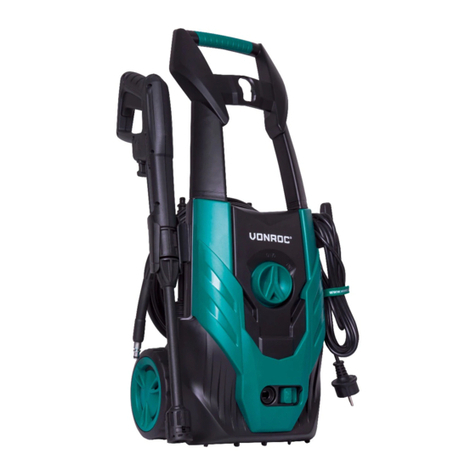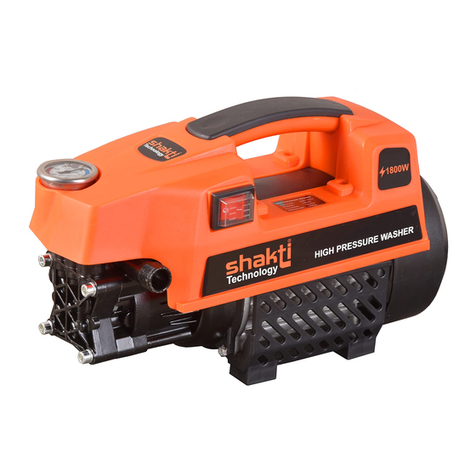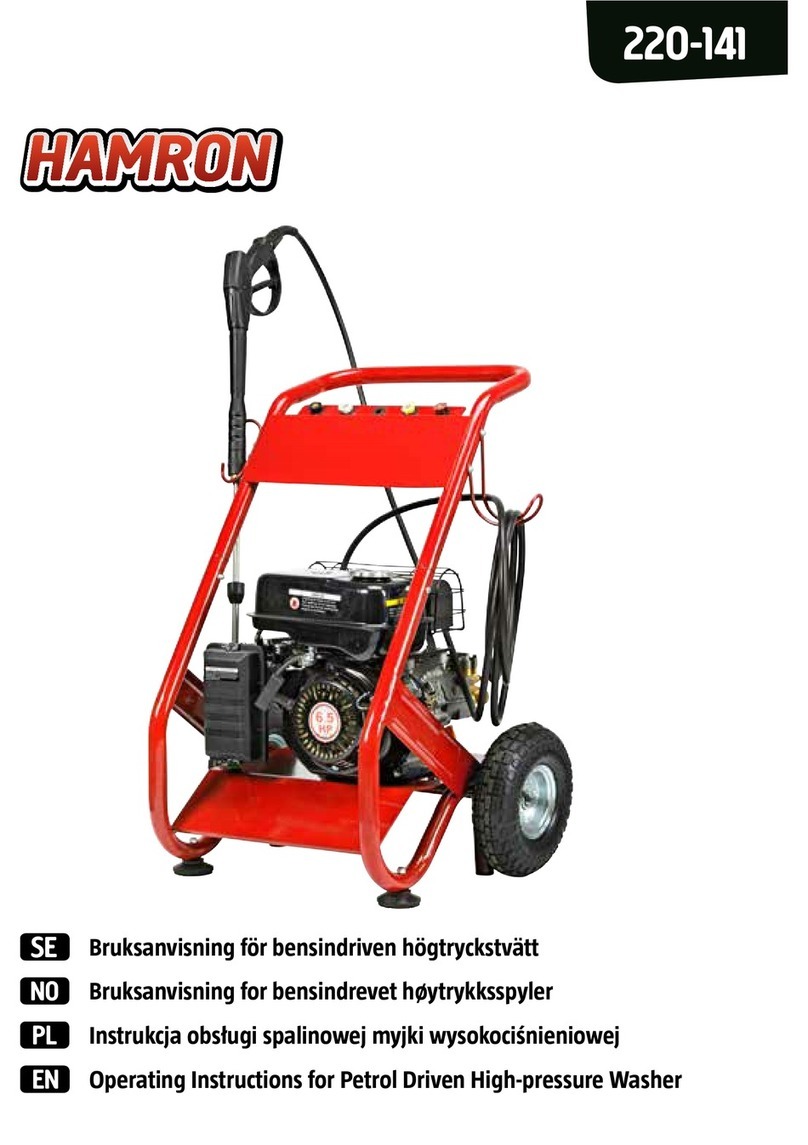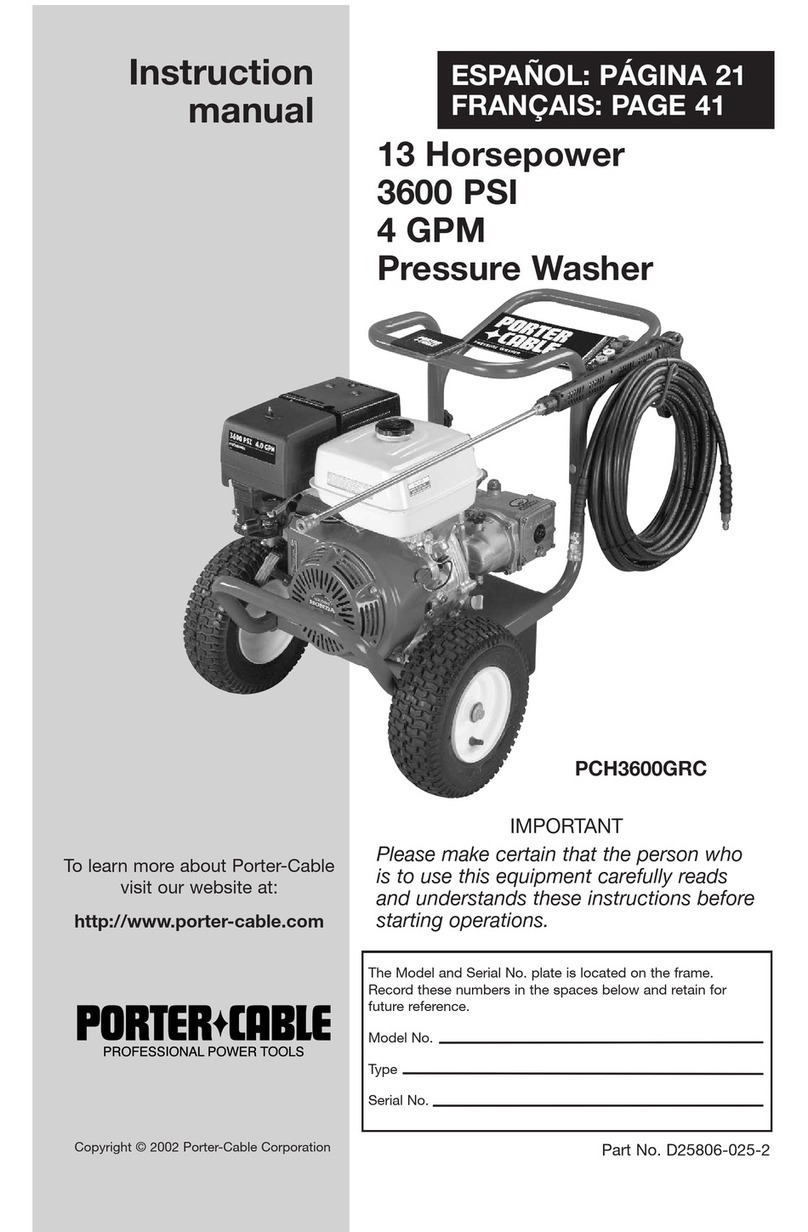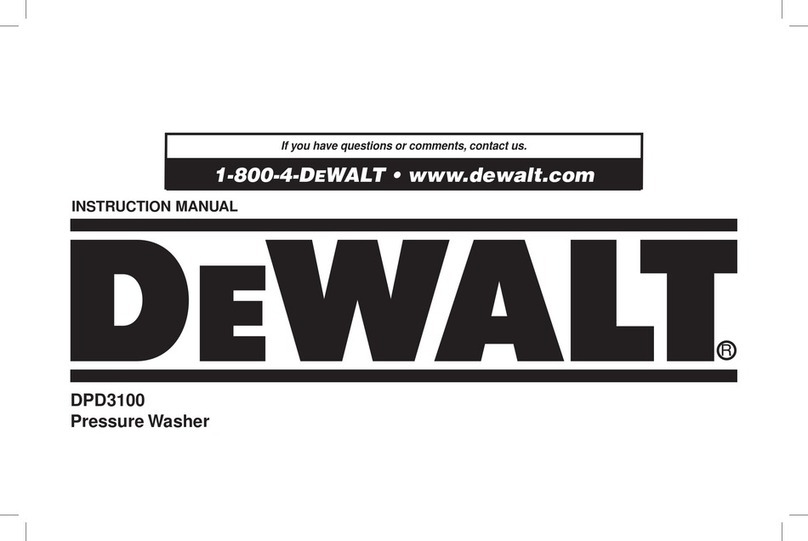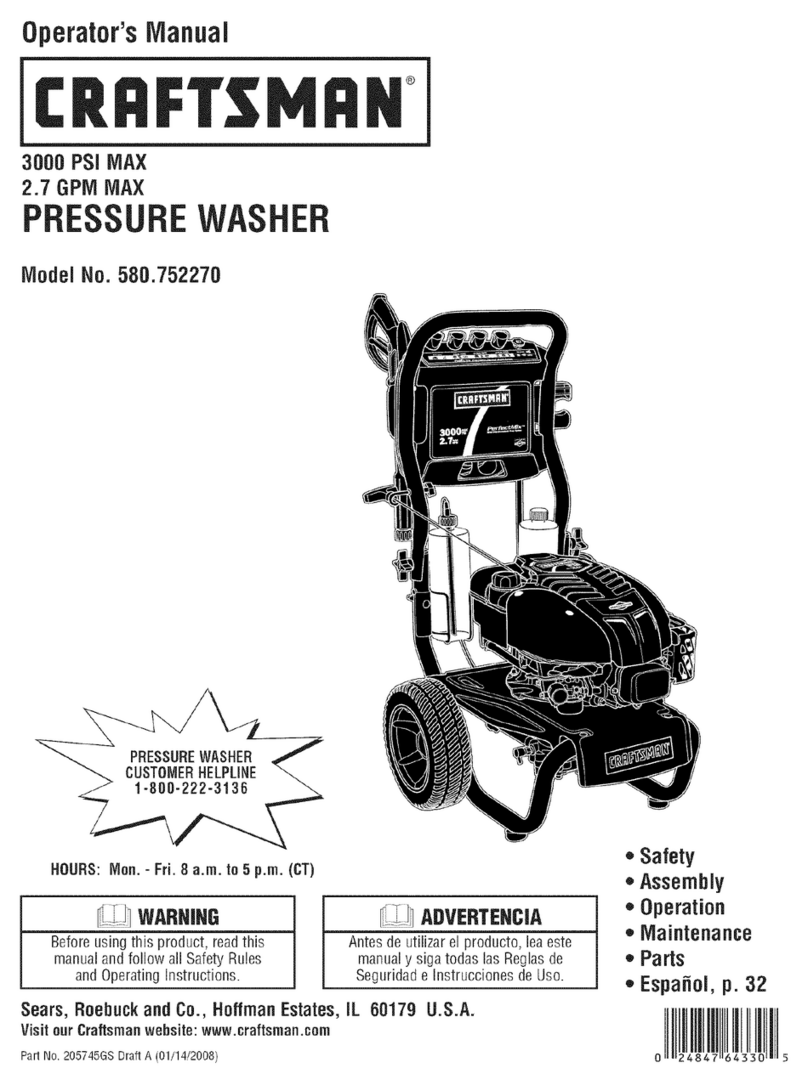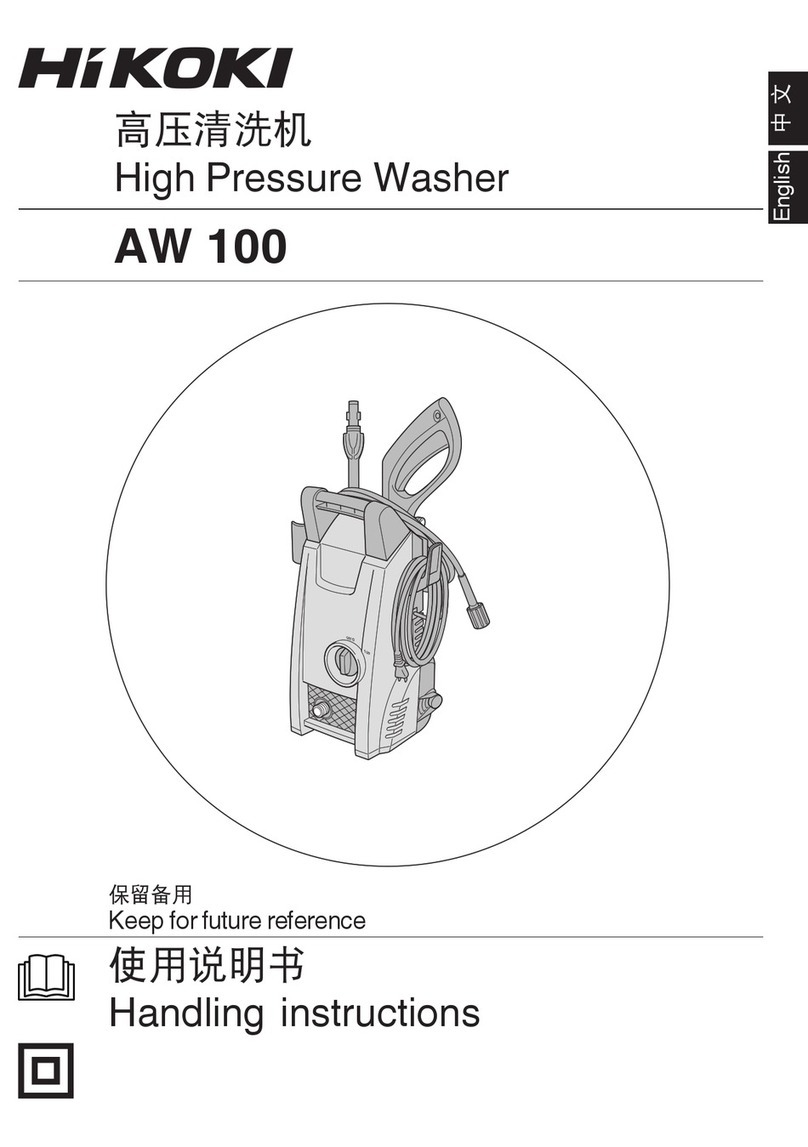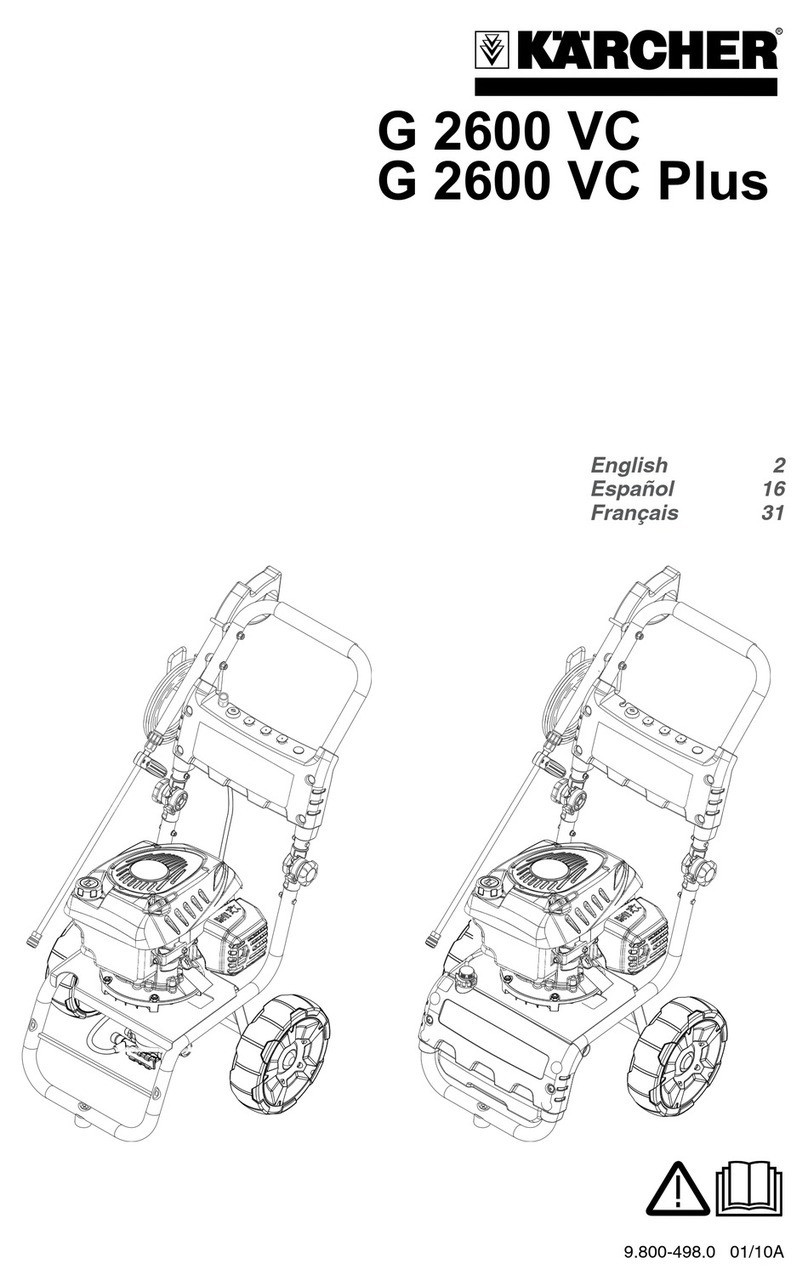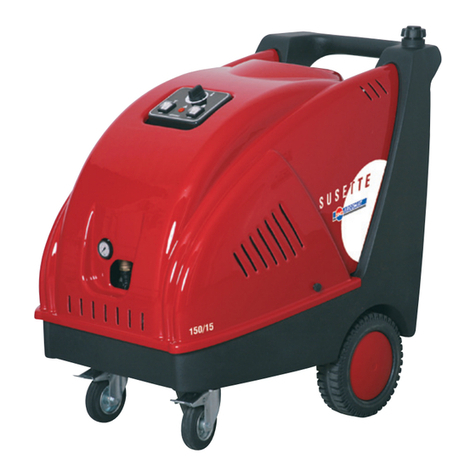replacement parts authorised by the
manufacturer.The use of original accesso-
ries and replacement parts will ensure
safe, trouble-free operation.
3.1.11 The cleaner must be used standing on a
secure, stable surface, positioned as
shown. FIG.3A
3.2 INTENDED USE
3.2.1 The cleaner is intended only for the clean-
ing of vehicles, machines, boats, build-
ings, etc., by the removal of stubborn dirt
using clean water and chemical deter-
gents.
For domestic use only (single-phase
motors only). Not for professional use (for
three-phase or industrial motors only), and
only for operation at temperatures above
0°C.
Compliant with EN 60335-2-79/A1 stan-
dard.
3.2.2 When using chemical detergents, use only
highly biodegradable types.
We recommend HOBBY FOAM detergent
(# 3206).
3.2.3 Only clean vehicle engines in areas in
which suitable oil traps are installed.
3.3 SAFETY VALVE
3.3.1 The safety valve also functions as a pres-
sure limiting valve.When the gun trigger is
released, the safety valve opens and the
water recirculates through the pump inlet.
4INSTALLATION
4.1 Fit the lance into the gun and
rotate it until the two parts are
completely locked. FIG.4A
4.2 Connect the gun to the high pressure
hose. FIG.4B
4.3 Connect the high pressure hose to the
water outlet on the cleaner. FIG.4C
4.4 Connect the water supply hose FIG.4D
(not supplied) to the water inlet of the
cleaner. The supply hose must have an
internal diameter of at least 13 mm (1/2
in.) and must be reinforced. The water
supply must be at least equal to the clea-
ner delivery capacity.
The intake water tempera-
ture must not exceed 60°C
(122°F). The water supply pressure
must not exceed 10 bar (145 psi).
4.4.1 CAUTION! The cleaner must only
be used with clean water; use of
unfiltered water or corrosive chemicals
will damage the cleaner.
4.5 Turn the motor switch to the "0" position.
FIG. 5B
4.6 Check that the electrical supply voltage and
f-Electrical cable (with plug only for 1~)
g-Lance
h-Gun with safety catch
i-High pressure hose
m-Nozzle cleaning tool
n-Motor switch
q-Pressure gauge
r-Pressure regulator knob
s-Tank outlet plug
t-Motor rotation key (for models with this
feature)
u-Detergent tank plug
v-Detergent control knob
y-Data plate
3GENERAL RULES
3.1.1 The USE and MAINTENANCE manual
constitutes an essential part of the cleaner
equipment and should be kept in a safe
place for future reference. If you sell the
cleaner, the manual should be handed on
to the new owner.
3.1.2 Before starting the cleaner, make sure that
it is receiving water correctly. Operating
the cleaner without water could damage
the seals.
3.1.3 Do not disconnect the plug by pulling on
the electrical cable.
3.1.4 If you are too far from the object you wish
to clean, do not move the cleaner nearer
by pulling on the high pressure hose; use
the handle provided.
3.1.5 Protect the cleaner from freezing during
the winter.
3.1.6 Do not obstruct the ventilation grilles
during operation.
3.1.7 The cross-section of any exten-
sion cables used must be propor-
tional to their length, i.e. the longer the
extension cable, the greater the cross-
section; cables with a protection level
of "IPX5" must be used. See table a.
Table a.
3.1.8 Position the cleaner as NEAR as possible
to the water supply.
3.1.9 The packaging is easily recyclable, and
must be disposed of in compliance with
the regulations in force in the country of
installation.
3.1.10 Use the cleaner only with accessories and
8English
Voltage Extension Extension
Volts cable cable
up to 25 m up to 50 m
220 - 230 section section
MOTOR 240 - 400 3x1.5 mm23x2.5 mm2
100 - 115 section section
120 3x2.5 mm23x4 mm2
